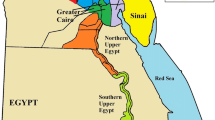Abstract
This paper analyses how migrations, environment and epidemics interact to shape genetic variation in the moder human species.
The gene mutation that makes humans resistant to malaria is a striking example of how disease can shape the human genome. In Europe malaria spread in coincidence with the arrival of populations from Asia Minor and eastern Mediterranean and was favoured by the spread of agriculture, by the sedentary conditions of life and the related demographic increase.
Natural selection, generally, shape the gene pool of a population in order to fit a different environment. This is the reason because hemoglobinopathies and enzyme G6PD deficit are greatly spread in areas hit by malaria epidemic. These effects are particularly evident in isolated regions or in islands with low population density, e.g. Sardinia.
Disasters such as epidemics may drastically reduced the size of a population, and the victims under such circumstances are not selected. As a result the survivors within this small population are unlikely to be representative of the original population in its genetic makeup, and this occurrence is known as “bottleneck effect”. Sardinia, for instance, was hit between 1300 and 1700 by several plague epidemics. Such events drastically reduced the total number of inhabitants; creating a local alteration in the gene frequencies, that have moulded the genetics of the population. This has brought about not only a differentiation with respect to other Mediterranean populations, but creating a variability inside the island.
Similar content being viewed by others
References
Calò C.M., Vona G. 1994. Carloforte: evoluzione della struttura matrimoniale.Rendiconti Seminario Facoltà Scienze Università Cagliari, Vol. 64 Fasc. 1.
Garnham P.C. 1966. Comments on biology of human malaria.Mil. Med. Sep; 131(9):Suppl:961–2.
Heath S., Robledo R., Beggs W., Feola G., Parodo C., Rinaldi A., Contu L., Dana D., Stambolian D. and Siniscalco M. 2001. A novel approach to search for identity by descent in small samples of patients and controls from the same mendelian breeding unit: a pilot study on myopia.Human Heredity, 52: 183–190.
Siniscalco M., Bernini L., Filippi G., Latte B., Meera Khan P., Pomelli S., Rattizzi M. 1966. Population genetics of haemoglobin variants, thalassemia and glucose 6-phosfate dehydrogenase deficiency, with particular reference to the malaria hypothesis.Bull. World Health Organ. 34 (3): 379–93
Vona G., Porcella P. 1984. Etude sur la distribution de la deficience en G-6-PD en Sardaigne.Bull. et Mem. de la Soc. d'Anthr. de Paris, 1, XIV, 125–134.
Vona G., Calò C. M., Lucia G., Mameli G. E., Succa V., Esteban E., Moral P. 1996. Genetics, geography, and culture: the population of S. Pietro Island (Sardinia, Italy).American Journal of Physical Anthropology, 100:461–471.
Vona G. 1995. Le caratteristiche genetiche dei sardi.Antropologia contemporanea, Vol. 18-N. 3-4 (101–109).
Author information
Authors and Affiliations
Rights and permissions
About this article
Cite this article
Piras, I.S., Vacca, L. & Calò, C.M. Genetic effects of human migrations and isolation. Hum. Evol. 20, 193–199 (2005). https://doi.org/10.1007/BF02438736
Issue Date:
DOI: https://doi.org/10.1007/BF02438736




